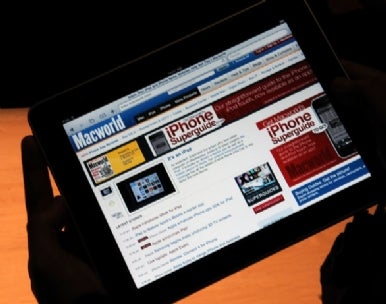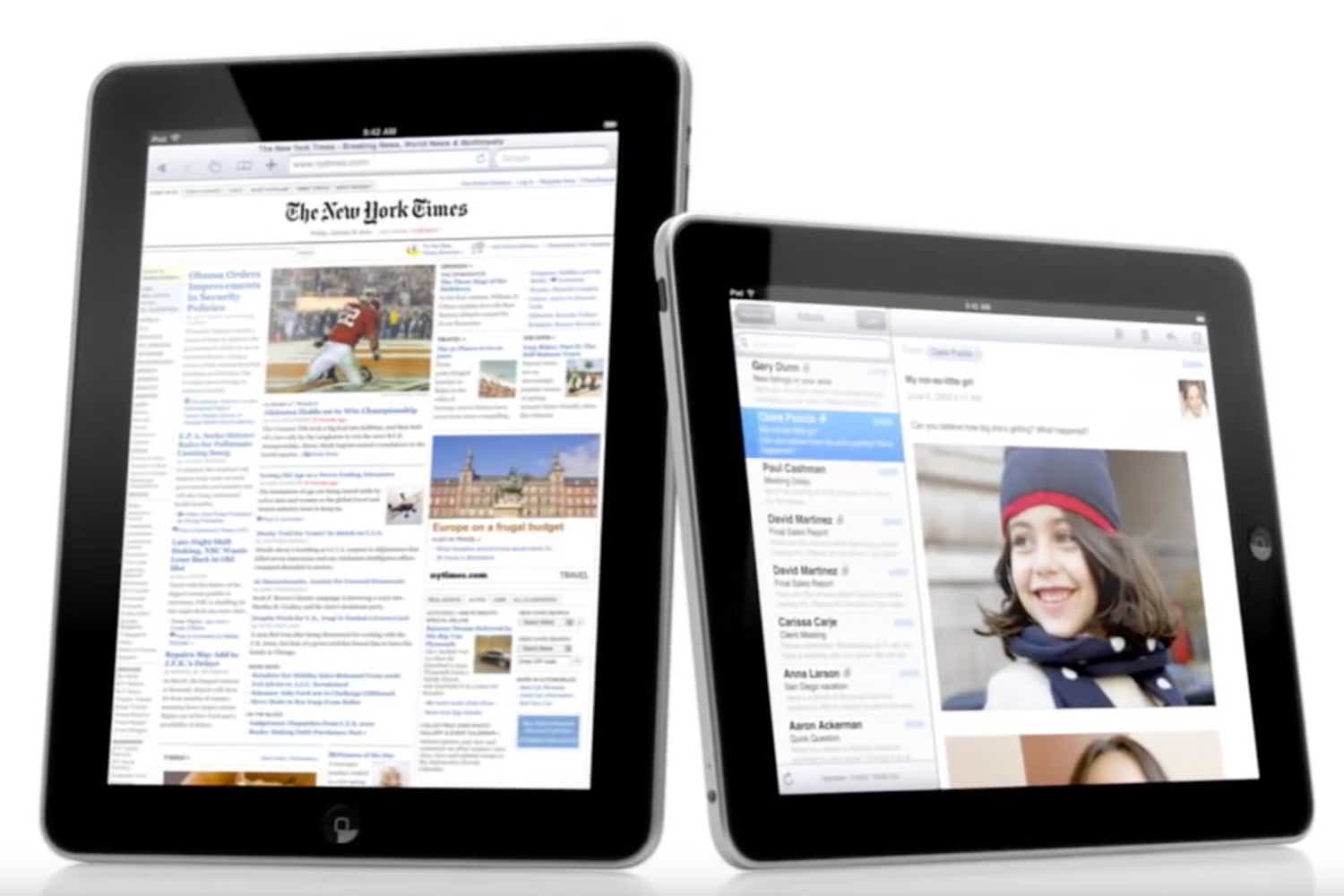We’re all used to wide screens these days: on our computers, TVs and even our iPhones. All Macs today come with 16:10 screens (with the exception of the iMac, which is 16:9); HD TV screens are 16:9; and iPhones and iPod touches are 15:10. These devices are designed for content that is viewed essentially in a horizontal manner: even though you work on word processing documents and read web pages that flow vertically, Apple wants you to know that you can watch movies on your Mac. In fact, this widescreen format has become so common in recent years that many people seem surprised by the iPad’s screen format of 4:3.
Those who have used computers for a while will recognize the old “golden mean” of pixel resolution in the iPad’s 1024×768 display. That was the resolution used by most monitors—at least those that were 14 or 15 inches, the most common sizes for many years. The first iMac in 1998 had a 15-inch display at 1024×768, as did the first flat-panel iMac in 2002. It wasn’t until 2003 that Apple started shipping widescreen Macs.
So the switch to 4:3 for the iPad has some commentators scratching their heads, or even griping. Macworld’s hands on article about the iPad highlighted the fact that this doesn’t work well for watching movies: “This is the dark side of Apple using a 4:3 display in an era of 16:9 video content—the screen just doesn’t fit the content.”
But I have to disagree. I think the screen format was chosen exactly for content, or at least for that type of content most likely to be viewed on the iPad.
Take a look at any newsstand. Most magazines you’ll find are in roughly 4:3 format. This is true not only for the US, but I measured some French and British magazines as well, and it’s close to being an industry standard. Newspapers will also be more readable in 4:3 than widescreen. And look at books: most hardcovers are around 4.5:3, as are most trade paperbacks.
One of the selling points for the iPad is its use as an e-book reader, using Apple’s iBooks software, and Jason Snell sees the iPad as a great device for displaying comics, saying, “the iPad’s 1024-by-768-pixel display, while in the unfashionable 4:3 aspect ratio, is just about the right shape for a comic-book page.”
But it’s not just about books. Surfing the Web on a 16:10 screen is annoying. The screen is too wide for you to zoom your browser window to fill all that space, and it looks like you’re wasting a lot of free space because of the tyranny of the wide screen. A 4:3 screen offers better browsing in both portrait and landscape positions, while a 16:9 screen is either too wide or too narrow (depending on which way you hold the device).

Also, a 4:3 screen is better when you’re working with productivity apps, such as a word processor or presentation program, no matter which orientation you use. This format is certainly better for working with iWork applications, such as Pages and Keynote. (Though for Numbers, it really depends on how your spreadsheet is laid out.)
It looks like Apple’s choice of the 4:3 format is designed to fit certain types of usage, such as reading books and magazines, browsing the Web and using productivity applications. While many people will probably watch movies on the iPad, Apple seems to be betting that the iPad will be used very differently from laptops.
One more thing: a device that you hold in two hands feels more natural in a 4:3 format than a 16:10. It would seem too tall or too wide, depending on how you hold it, because of the general size of books and magazines. And you can bet that the first impression, when you pick up an iPad in an Apple Store, will go a long way toward convincing you to buy one.
[Senior contributor Kirk McElhearn writes about more than just Macs on his blog Kirkville.]
Updated to note that new iMacs feature a 16:9 screen.

